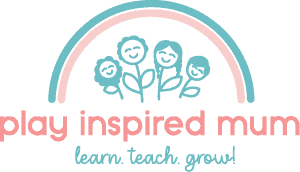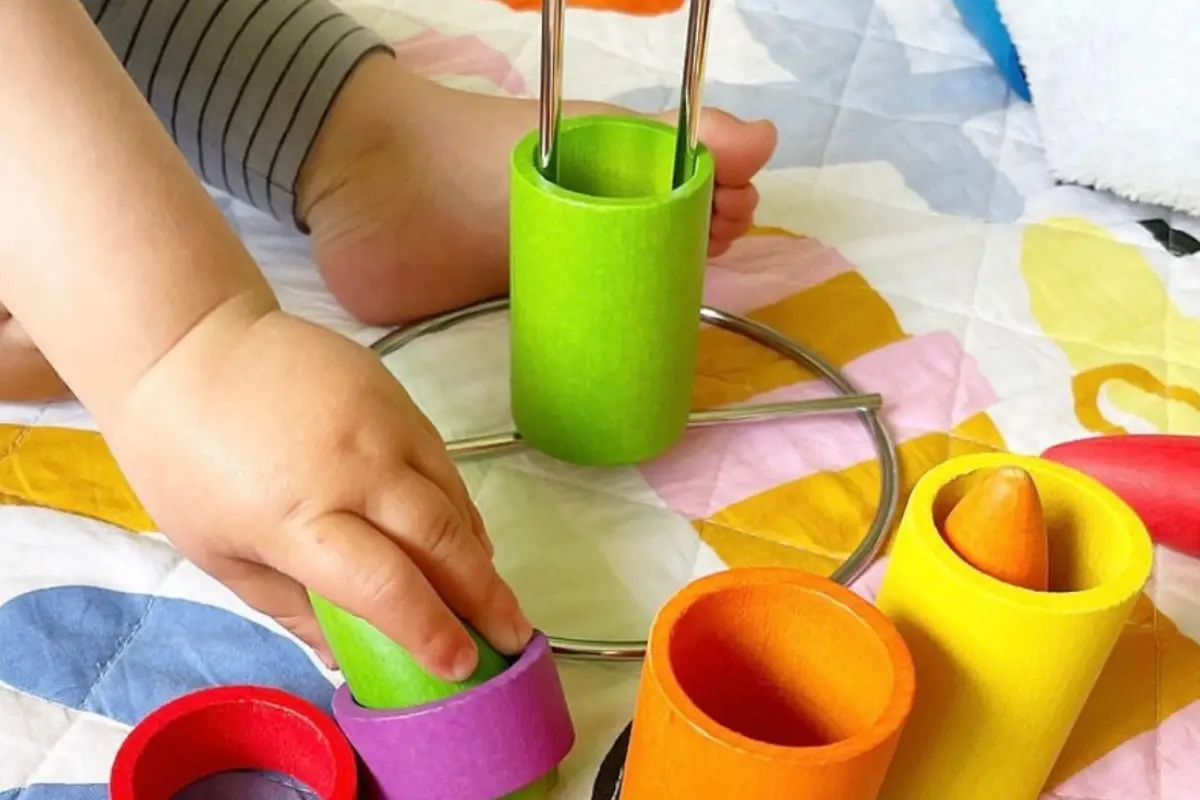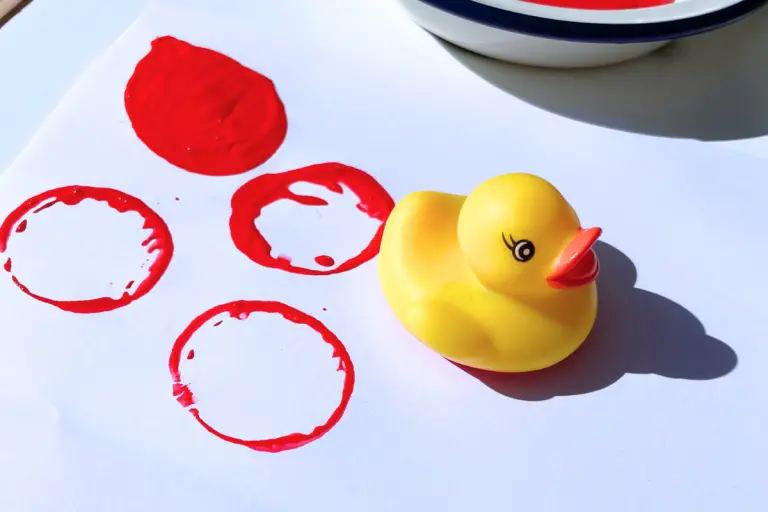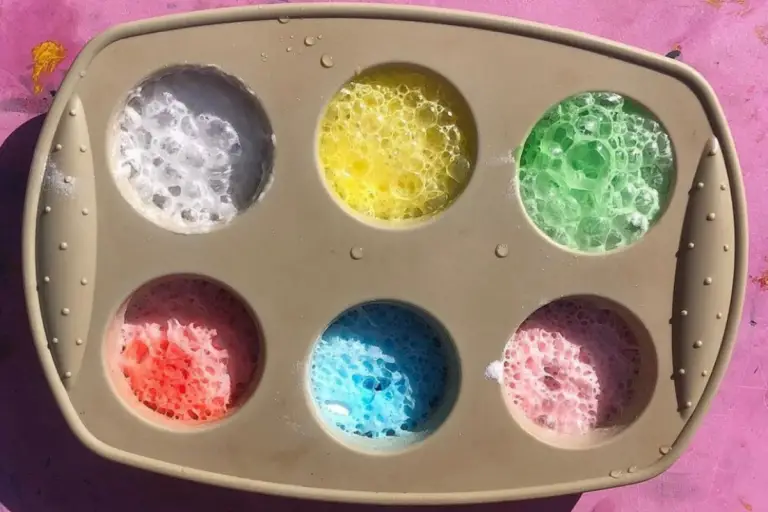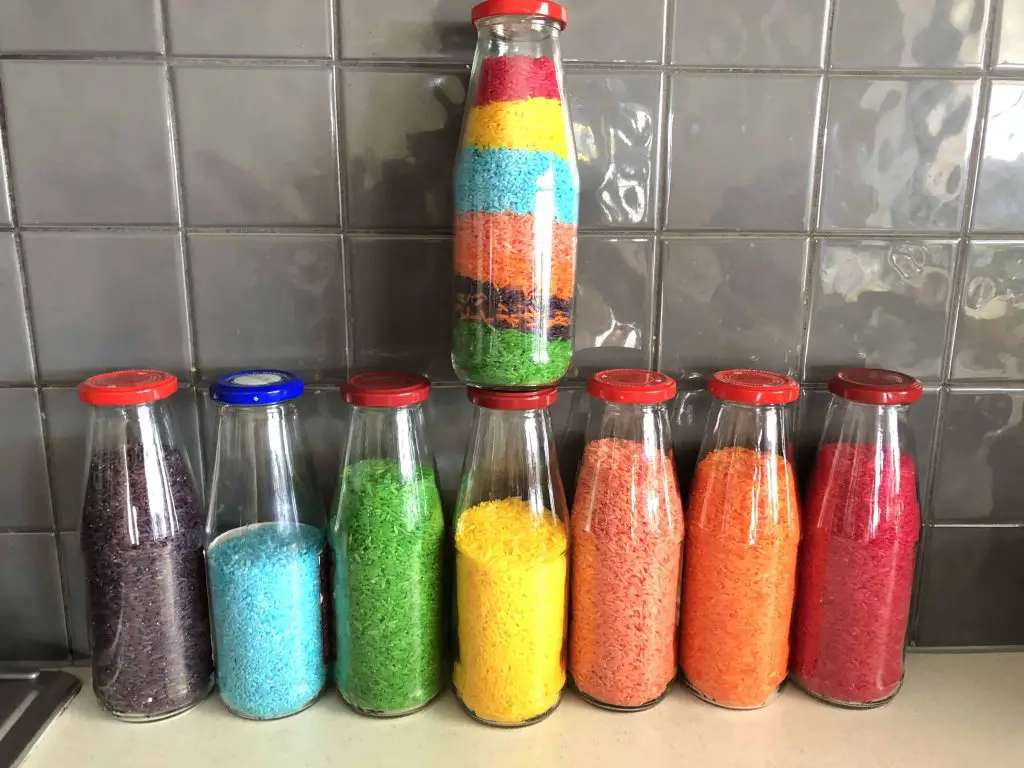Thrifty Threading: Wooden Tubes and Paper Towel Holders
Disclosure: This blog contains affiliate links which I may earn a small commission from if you purchase through them, at no extra cost to you.
Encourage your baby to learn through play with this fun DIY threading with wooden tubes activity.
Use common household items to transform a humble wooden tube into a game that your baby will want to do over and over again.
Each grasp will be strengthening their hands.
Each mistake will be a neural connection made, building a developing brain.
Every aim will be a lesson in hand eye coordination.
Each tube dropped will be an experiment with cause and effect.
The sound, the feel and each taste, because we all know these will end up in their mouth, will be more data to expand their known world.
This easy DIY is not only going to entertain but going to help grow your babies developing mind.
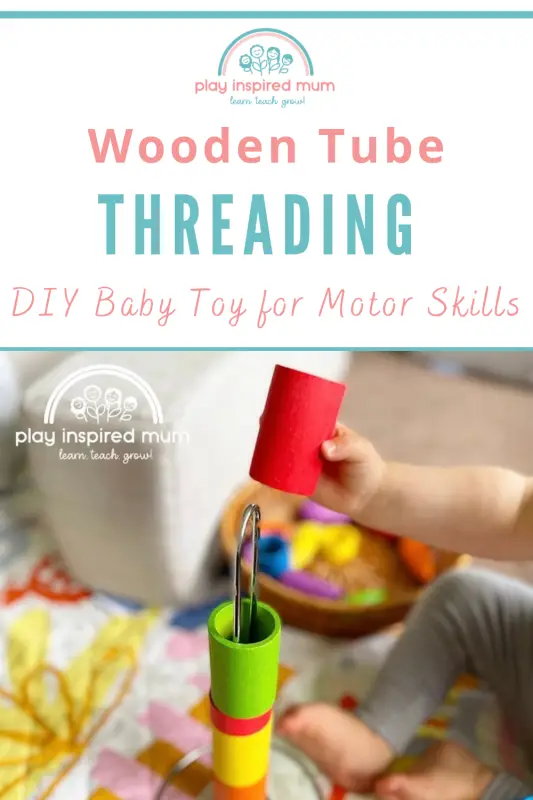
Threading with Wooden Tubes
I discovered a baby play idea that seemed too simple to be true.
It involved threading wooden tubes onto a paper towel holder.
At first glance, one might underestimate the value of such a toddler activity.
The magic lies in its simplicity and the developmental benefits it presents.
Threading, as a baby activity, fosters hand-eye coordination and fine motor skills.
It teaches young minds about cause and effect, all while they grasp and maneuver through problem-solving exercises.
Like many meaningful play ideas, this threading activity for babies and toddlers turns everyday items into tools for learning through play.
I was amazed to see how engaging this task could be, offering a chance for babies to improve their skills by crossing midline, a crucial part of early development.
In threading, we find a balance of fun and educational value, laying a foundation for more complex tasks as they grow.

Why Threading Activities Are Beneficial
I discovered threading activities held a trove of benefits.
They boosted my little one’s hand-eye coordination significantly.
Grasping those wooden tubes strengthened her tiny fingers, preparing them for more complex tasks ahead.
It was more than a pastime; it was learning through play.
These activities laid the groundwork for understanding cause and effect.
She learned that every action, like threading a tube onto a paper towel holder, had a direct outcome.
It wasn’t long before problem-solving skills began to emerge.
As she navigated the challenges of aligning and threading, I watched her mind work, turning gears, solving puzzles without even knowing she was learning.
It taught me that meaningful play ideas could shape cognitive development in ways I had never imagined, making every moment of play a step towards growth for both babies and toddlers.

Gathering Your Materials
For our thrifty threading activity, you’ll need a few basic items.
Gathering these materials is the first step towards a fun learning experience through play.
Your baby or toddler will soon be developing their hand-eye coordination, grasping skills, and understanding cause and effect, all while solving problems and perhaps even crossing the midline, without even realizing they’re hard at work!
Here’s what you’ll need:
- Wooden tubes: These can be simple, unfinished pieces found at a craft store. Ensure they’re wide enough for easy threading but not too small to pose a choking hazard.
- Paper towel holder: Any standard holder will do. This will serve as the base for our threading activity.
- Non-toxic paint or markers (optional): For adding a bit of color and creativity to the wooden tubes. Make sure whatever you choose is safe for baby.
- Safety check: Before we dive in, ensure all materials are smooth and free of splinters. Supervision is key during this baby and toddler activity to keep it both fun and safe.
We used our wooden tubes from Totli to thread onto our paper towel holder.
They have been so versatile for so many activities for all three children.
I love the bright coloured and the tactile finish of these tubes and the wooden leaves.
If you don’t have the wooden tubes, swap them out for cardboard tubes!
Easy!
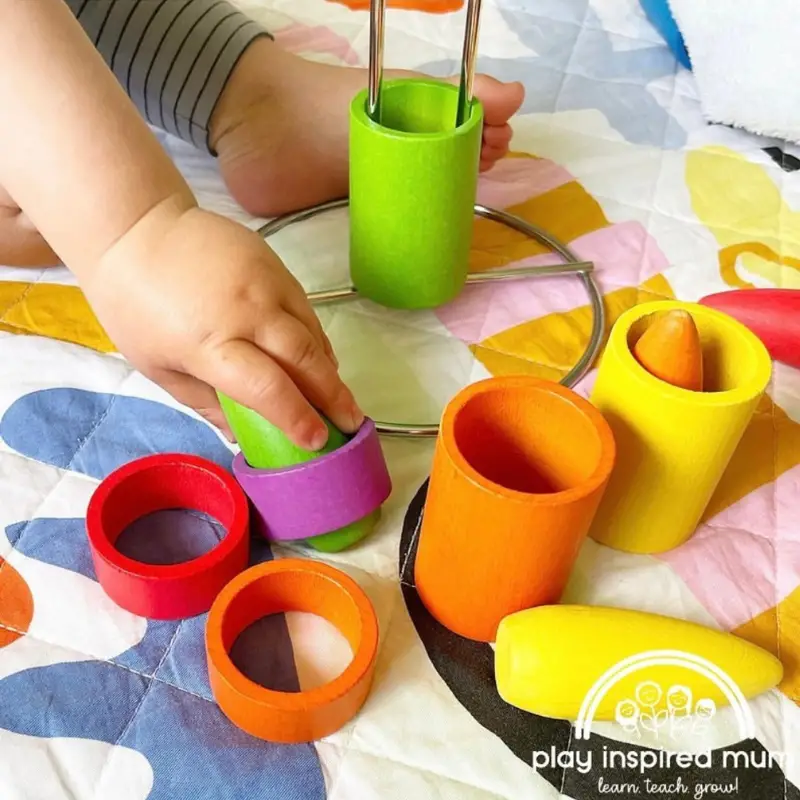
Setting Up the Activity
I had already gathered my wooden tubes and a sturdy paper towel holder, fascinated by the idea of creating a baby activity that focuses on threading.
The preparation was surprisingly straightforward, yet the developmental benefits for my toddler were promising, from enhancing hand-eye coordination to grasping the intricacies of problem-solving.
This threading activity, aimed at toddlers and babies, promised not just fun but a meaningful play idea that would aid in their learning through play. Here’s how I set it up:
- Place the paper towel holder on a flat, stable surface where your baby or toddler can easily reach it.
- Gather a variety of wooden tubes. Ensure they have holes large enough to fit comfortably over the paper towel holder but are still safe for baby play. The diameter and texture of these tubes can add an interesting twist to the baby activity.
- Introduce the wooden tubes to your toddler, showing them how to slide each tube onto the paper towel holder. This simple action fascinates them and is key in developing their grasping technique and hand-eye coordination.
- Encourage exploration by allowing your baby or toddler to try the threading activity on their own. Observe as they learn cause and effect, enhance their problem-solving skills, and even practice crossing the midline, all essential aspects of their development.
This toddler activity not only offers a thrifty baby play idea but morphs simple items into tools that foster meaningful developmental leaps.
The beauty lies in its simplicity, transforming everyday household objects into a world of learning and fun.
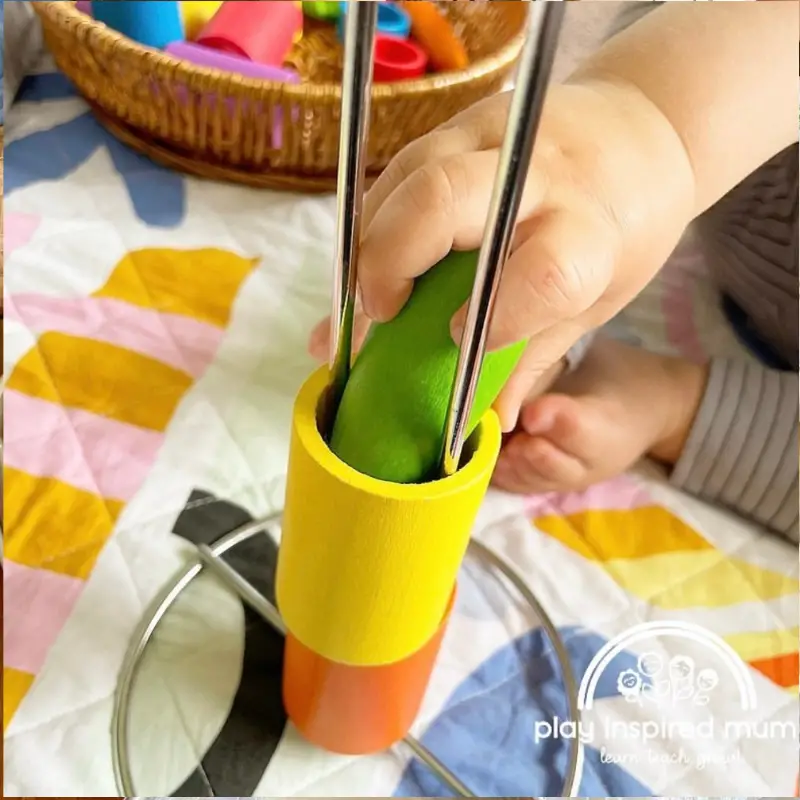
Engaging Your Baby or Toddler
I found that making baby play ideas thrilling can often be as simple as showing enthusiasm myself.
Once I gathered wooden tubes and a paper towel holder for a toddler threading activity, the excitement was palpable.
I would demonstrate the threading, emphasizing the cause and effect, and their eyes would light up. Inviting them to try, I’ve learned, ensures they feel part of the exploration.
Keeping their focus requires a balance of challenge and success.
If the baby activity seemed too easy, I’d introduce slightly more complex threading items, like mixing sizes of the wooden tubes for hand-eye coordination practice.
For toddlers, turning it into a game where each threaded tube earns a cheer proved effective.
This knack for grasping and learning through play becomes a shared adventure.
Problem-solving turns into a game, and before long, they’re not just crossing the midline but creating patterns and sequences, revealing the boundless joy found in meaningful play ideas.
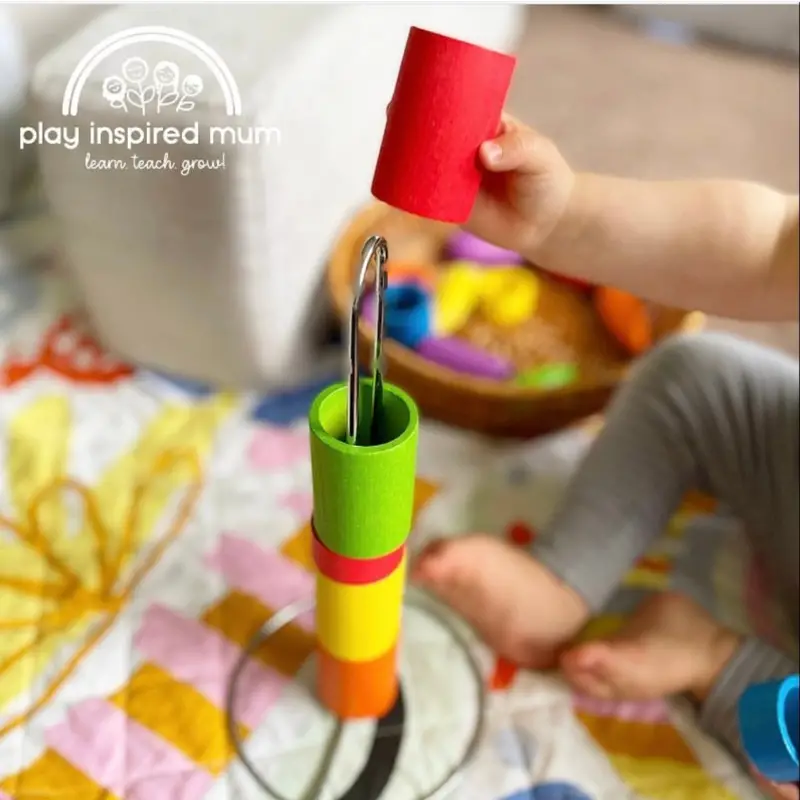
Safety Tips
Ensuring the safety of our little ones is paramount during play.
Threading activities, while fun, pose potential hazards.
I have focused on eliminating risks so your baby or toddler can explore and learn securely.
There are several steps you will need to follow for a safe play environment.
- Inspect wooden tubes and the paper towel holder for splinters or sharp edges. Sanding them down can prevent unwanted scratches or more serious injuries.
- Supervise your baby or toddler throughout the activity. It prevents them from putting small parts in their mouths, reducing the risk of choking.
- Choose the right size for wooden tubes; they should be large enough not to fit entirely in your child’s mouth but light enough for easy manipulation, enhancing their hand-eye coordination and grasping skills.
This baby play idea is not just about threading; it’s a comprehensive learning through play experience.
With these precautions, we safeguard their exploration journey, fostering problem-solving and cause-and-effect understanding safely.
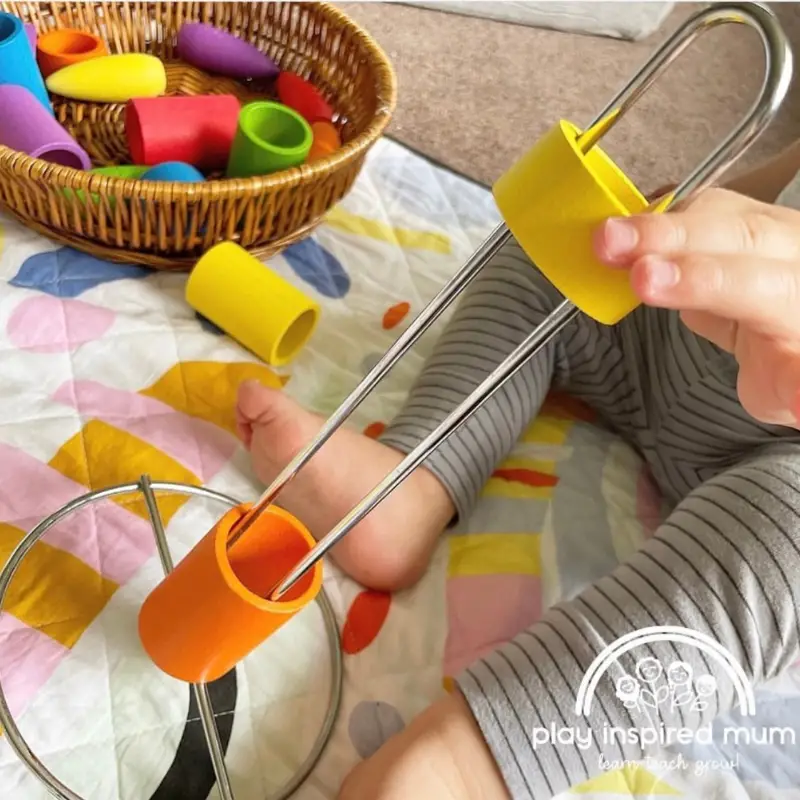
Adapting the Activity for Different Ages
As our little ones sprout and reveal more about their burgeoning personalities, we’ve seen threading activities, especially those involving baby play ideas like wooden tubes, transform.
Older toddlers crave complexity and novelty, pushing us to become cunning in adaptation.
For this reason, I often thought about elevating the wooden tube threading activity.
Initially designed for simple hand-eye coordination and grasping, the complexity can be upped in a flash to keep their nimble minds engaged.
Here’s how:
- Introducing Patterns: Prompt your toddler to follow specific color patterns or sequences. This twist encourages not just hand-eye coordination but problem-solving and planning.
- Crossing Midline Challenges: Place the materials in a way that they need to reach across their body. This will not only perfect their dexterity but assist in crossing the midline, a vital motor skill for later activities such as reading and writing.
- Varying Materials: Swap the wooden tubes for objects of differing textures or sizes. This variation keeps the threading activity fresh and nudges their sensory development further.
Remember, the essence of meaningful play ideas lies not in the complexity of the toy but in the interaction it fosters.
Through problem-solving and learning through play, we hand them the key to a world brimming with cause and effect.
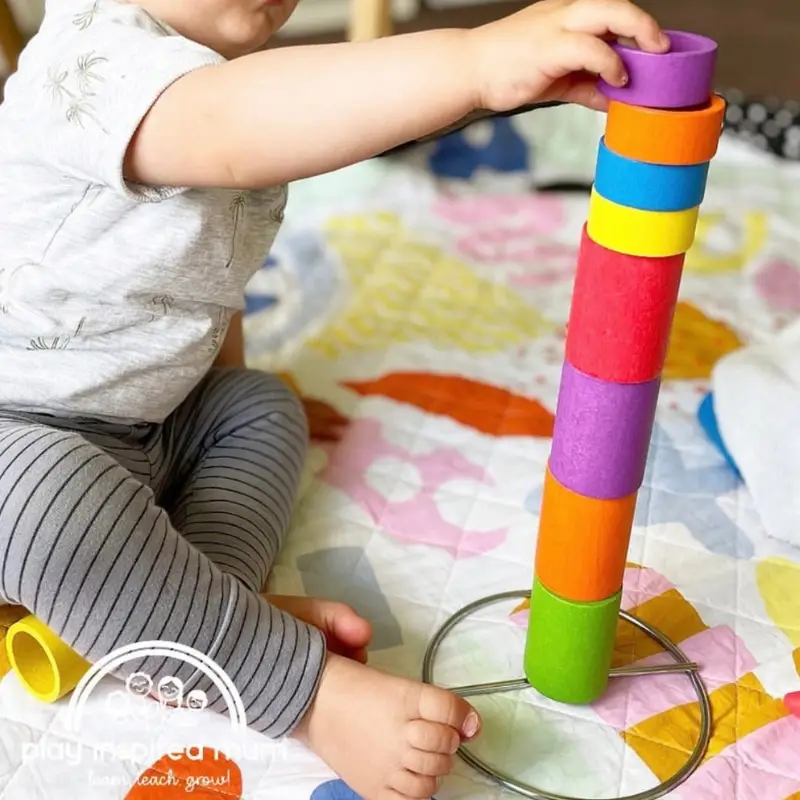
A World of Wonder in Simple Play
I found that everyday objects hold a universe of learning opportunities for babies and toddlers.
In the world of early development, creativity and engagement spark wonders beyond what one might initially expect.
Through something as simple as threading wooden tubes onto a paper towel holder, we discovered a reservoir of developmental benefits.
These ranged from fine-tuning hand-eye coordination and grasping skills to the joy of solving a problem through play.
It was a demonstration of how meaningful play ideas can stem from the most ordinary materials around us.
For us, this activity was not just about passing time.
It proved to be a foundational step in understanding cause and effect, honing problem-solving capabilities, and even crossing the midline – all crucial elements in a child’s growth.
This threading adventure reminded me that encouraging learning through play with baby play ideas or toddler activities doesn’t require expensive toys or complicated setups.
Instead, it leans heavily on the imagination and the willingness to see the potential in what is readily available.
Finally, adapting this activity for different ages guarantees it remains a challenge, offering fresh avenues for exploration as our little ones grow.
This excites me about the countless possibilities for meaningful play ideas, ensuring that each day is filled with new discoveries and joy.
Indeed, transforming everyday items into educational play tools underscores the essence of creativity in nurturing a child’s development.
